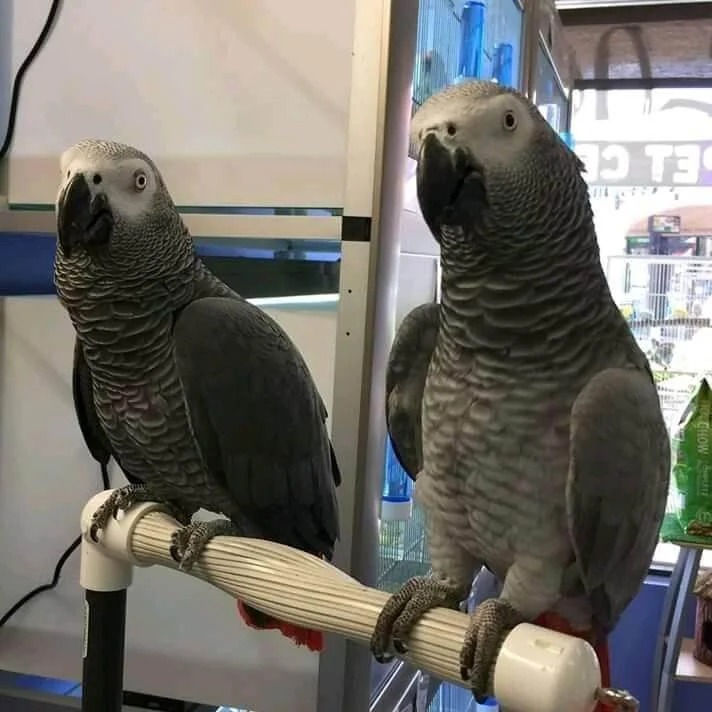This company has no active jobs
The One Alex The African Grey Parrot Trick Every Person Should Be Able To
Alex the African Grey ParrotWhen animal psychologist Irene Pepperberg entered a Northwest Side pet shop in 1977 and bought a haughty one-year-old African grey parrot named Alex She began a 30-year research project that altered the way we think about the intelligence of birds. Alex's research disproved the belief that birds could only mimic human language without understanding meaning.
What is Alex?
Alex (short form for Avian Learning experiment) was originally an African grey parrot bought from a pet store. Over the course of his lifetime, he broke new ground in animal psychology, and proved that animals are just as intelligent as dolphins or primates. Alex was one the most well-known talking birds around the globe until his death in 2007. He was a regular on TV programs and reports on science.
In his lifetime, Alex learned over 150 words and could identify shapes, colors materials, and the sizes of objects. He was able comprehend the meanings of words, which is a feat that is rare for birds. When he was able to hear "grape", he knew that it was not a vegetable, but a fruit. Dr. Pepperberg taught Alex words in a way that helped him comprehend the meaning of them. She and a colleague would role-play the roles of student and teacher. Alex observed and listened. When he understood the correct pronunciation and definition of the word, he was rewarded with the object that went along with it.
She also taught Alex the significance of words, not just the sounds. This was a groundbreaking method because it's usually the case that pet parrots are taught words for their novelty value only. When the owners say a particular word but they don't actually mean what they're saying. Alex however, on the other hand, meant exactly what he meant when he used a specific word.
Many people are enthralled by the fact that Alex could acquire so many things but some scientists have said that it was unfair to compare Alex to humans in terms of intelligence. They argued that even though Alex could communicate, he was not proficient in using logic phrases like "if there is x, then there is y."
Although this is still a matter of debate, the fact remains that Alex set the foundation for studies into animal intelligence and consciousness. When he died in 2007 at 31 years old, he was among the most famous talking parrots of all time.
What was Alex like?
Alex was a violent member of a gang who was a fan of brutal acts. Despite his violent tendencies, Alex was a very likable character and seemed to enjoy the power he wielded over his fellow hoodlums. He was a narcissist to two things in his life: violence and classical music, especially Beethoven and his songs, which always brought images of blood and depravity to him. He also was known to drink the milk that was spiked with drugs which the gang members and he would then use to fortify themselves for their "ultraviolence."
Alex's non-remarkable experience as an African Grey parrot at a pet store was a great help. He was quick to grasp words and concepts from his human trainer, Irene Pepperberg. Her thirty-year study on him revolutionized theories about animal cognition, communication and interaction. She was credited by Alex for helping her learn to employ the model, which proved effective in other animals and charmingafricangreyparrotforsale children with learning disabilities.
After her collaboration with him, Dr. Pepperberg went on to conduct studies with other parrots, including Wart and Griffin. She is now an assistant professor at the University of Washington and continues her pioneering research on birds.
As the tiniest member of the gang, Alex is perhaps the most innocent. She's a bit of a tween and has been described by other members as being a bit teasing. She is the most animal-loving member of the group. She is often the peacemaker between Clover and Sam when they are involved in unimportant squabbles (such as in "Abductions").
Alex has an extremely confident sense of self, which she uses to manipulate others. This has led to her getting into conflict with other members of the gang, including her longtime enemy Gigi, whom she blames for spilling a juice on her blanket as when she was a kid ("Mime World") She also has a Goth/Emo persona. She loves to wear black and write long poems about love, loss and life ("Boy Bands will be Boy Bands"). The show's creators have stated that Seth MacFarlane's song is her favorite and that she has dated him.
What was Alex like in terms of intelligence?
Alex is the African grey parrot that Irene Pepperberg first met in 1977, may have appeared to be another pet. Alex revolutionized the research into animal psychology by proving that birds are more than "rabbit minds."
When Irene Pepperberg first saw him at the pet shop, Alex was already an skilled talker. He could categorize and rename objects, as well as identify and request them. He could also express his feelings, such as when he was bored or annoyed during training sessions. He would inform his trainers of this by putting his chin on his cage, or saying loudly "I would like a banana."
Alex's intelligence was so advanced that he was able to comprehend and even categorize objects and their colors, shapes, and materials. He was also able to tell the distinction between bags made of plastic and wooden box, and count and compare quantities of various items. He even understood the concept zero, something that humans typically don't grasp until they are approximately four years old!
What made Alex's skills so impressive was that, unlike other parrots, Alex truly understood what he was saying. He was capable of using his vocabulary of more than 100 words to describe requests, refuse, and objects, as well as communicate their sizes and materials. He was able to comprehend the analogies and recognize written words, but did not seem to be able to connect them with their spoken form.
The majority of parrots learn words, but don't know what they mean. To teach Alex, Pepperberg and her assistants would enact scenarios involving the object they wanted him to know about. This method is known as the rival model and has since evolved into an accepted method of teaching animals.
Alex was not just an intelligent dog, but also a playful friend who loved playing with his owners. He was often an advisor and cheerleader during training sessions. He would encourage or remind them to do better. He was also very attentive and was able to sense the emotions of his human companions. He would leap into his owner's arms when she was happy, and cling to her legs if she was upset or sad.
What was Alex's influence?
In his short life, Alex changed many lives. His legacy is a testimony to his strength of determination and character. He was an inspiration to many mountain climbers, travelers and others who aspired to live life in their own way. He taught them that you can do anything if you put your mind to it. He believed that if you didn't worry about what others think of you, you can achieve the heights of success.
Throughout his journey, Chris/Alex had to face a lot of obstacles. He had to deal with the loss of his father as well as financial issues and the adversity. He was able to overcome all of these challenges by his determination and perseverance. He never gave up on his ambition to become a professional mountain climber. He did not give up on his dream of becoming a mountain climber.
Even after his death, he continues to inspire people all over the world. The film Free Solo is a documentary about the life of Alex and his amazing climbing accomplishments. This film has received great praise from critics and is considered to be one of the best documentaries ever produced. It has been awarded numerous awards including the Academy Award in 2019 for Best Documentary Feature.
In addition to his work with Dr. Pepperberg, Alex also pioneered new avenues in bird intelligence. Alex was able to sing more than 100 vocal labels for objects and actions. He was also capable of counting up to six sets of objects and showed math skills that were considered advanced at the time for birds.
He was also able to communicate with other animals using signs and had a good understanding of grammar. He employed a method of training known as "rival model" which included two trainers who showed the bird what they wanted to teach it. The trainers would switch places frequently so that the bird was able to interact with both trainers and receive attention and rewards from each of them.
 Alex was named a National Hero in 2014 by President Barack Obama after the success of Free Solo. Alex was able achieve many things in his lifetime because of his determination to character and his determination to live life to his own terms.
Alex was named a National Hero in 2014 by President Barack Obama after the success of Free Solo. Alex was able achieve many things in his lifetime because of his determination to character and his determination to live life to his own terms.
